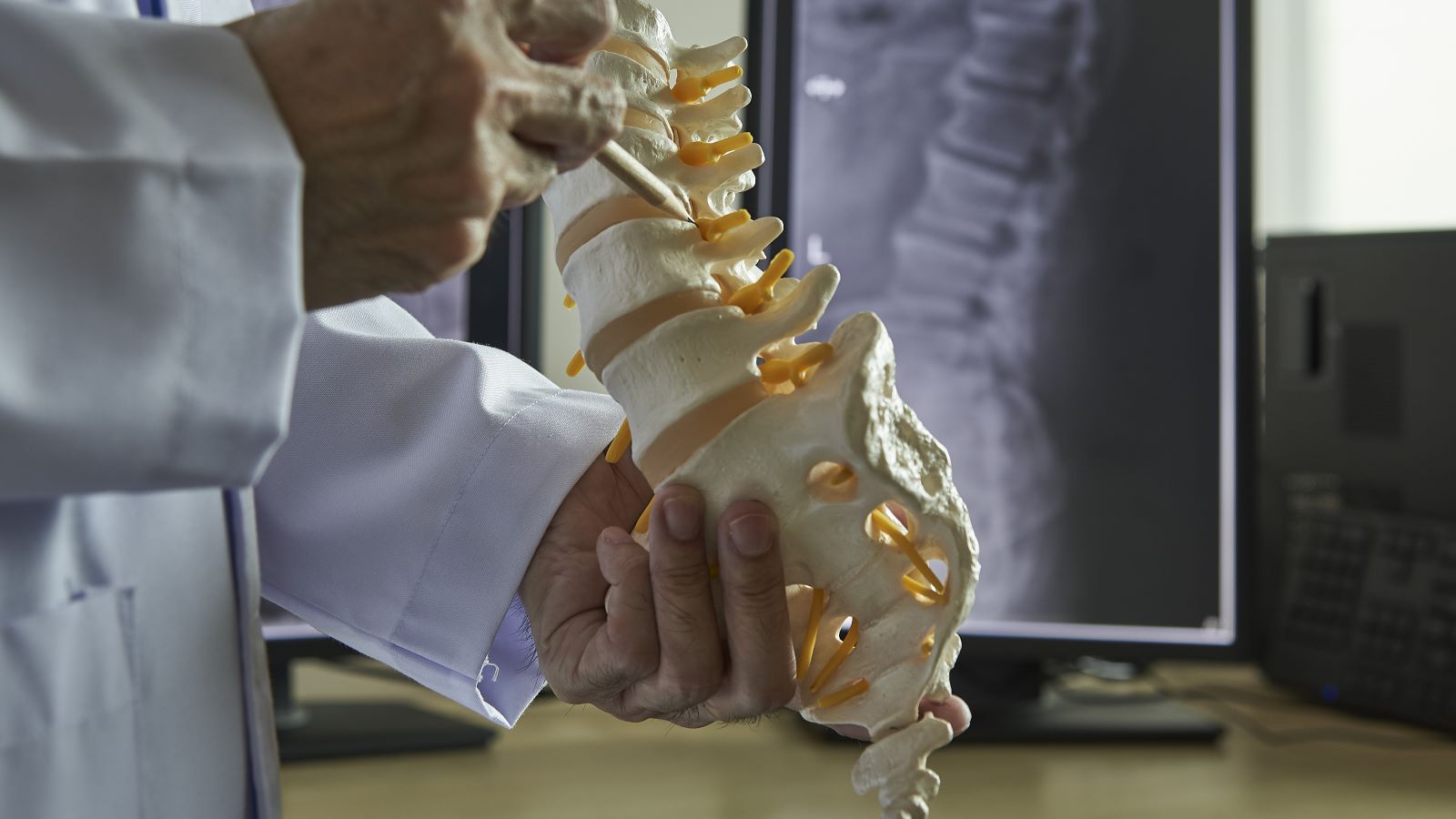<< Back
Thinking About Spine Surgery? Here Are 5 Things to Know

February 16, 2024
If constant back pain has left you considering spine surgery, we know it can be intimidating. But with the right approach, it doesn’t have to be.
So what do you need to know before taking the leap? We asked an expert.
But first – when do you actually need spine surgery?
Various issues may bring you to a spine specialist. These may include:
- Neck problems, which can present as arm numbness, tingling or weakness.
- Pinched nerves in the spine can compress your nerve roots and make them inflamed. This condition can cause numbness, weakness and pain that radiates down the leg.
- Spinal stenosis which can cause pain, tingling, or cramping in the lower back, legs, hips, and buttocks, and usually subsides with rest. This occurs due to a degenerative process, which causes narrowing in the spinal canal and compresses the nerves.
- Other spinal conditions include herniated disks, spinal cord injuries, spinal fractures, spinal tumors and spinal deformities.
Your spine surgeon will first perform an in-depth evaluation and discuss your concerns.
“Sometimes nonoperative treatment comes first,” says Gerard Girasole, MD, director of Orthopaedic Spine Surgery and medical co-director of Connecticut Orthopaedic Institute at St. Vincent’s Medical Center. “If patients still have persistent problems after that, we will discuss spine surgery options.”
> Related: My Scoliosis Is Getting Worse. Is It Time for Surgery?
1. Your diagnosis will determine whether open or minimally invasive surgery is right for you.
“Traditional open surgery still has a significant role in spinal surgery,” says Dr. Girasole. “However, even with that type of surgery, we have done things differently to make it more minimally invasive.”
He adds that “minimally invasive” is a broad term.
“There are still incisions in minimally invasive surgery (MIS),” explains Dr. Girasole. “Whatever approach you have, the goal of surgery is to minimize muscle manipulation and trauma, ultimately increasing the ability for postoperative early mobilization.”
Dr. Girasole advises patients not to seek a specific procedure.
“Look for a doctor proficient in all the procedures,” he says. “Let that expert advise you on the best approach to help your spine issues. Depending on your body habitus and clinical problem, your doctor will recommend either open or MIS techniques. All this aims to get you feeling better and back to your life.”
> Want more health news? Text StartHere to 85209 to sign up for text alerts
2. The first goal after spine surgery to get moving
It might come as a surprise, but the primary focus after spine surgery is to get patients moving.
“Whether it’s an open or minimally invasive technique, the goal is for early mobilization to restore the natural functions of the spine,” he says. “The common misconception is that you will be laid up for months, but the opposite is true. With modern techniques, we no longer advocate sedentary lifestyles after surgery,”
But that doesn’t mean you’ll be ready for intense exercise right after surgery.
“Exercise moderation is important in the early postoperative period. That’s why we encourage gentle motion, walking, and gentle bending to get acclimated and active post-surgery.”
3. These 4 steps can help you prepare for for spine surgery
Dr. Girasole offers four ways to prep for a successful surgery:
- Vet your doctor thoroughly online and find a skilled and proficient surgeon.
- Take care of your body and boost your nutrition; it will help you heal later.
- Stop smoking (or decrease your nicotine intake) before surgery.
- Don’t go down online rabbit holes for spine surgery research. Rely on your doctor for information.
“It’s so important that you feel confident with your doctor, and you also feel that you’ve exhausted all nonoperative management and require an operation,” says Dr. Girasole.
4. Returning to work and activities takes time
Returning to work and activities depends on your procedure, surgical method, job (desk vs. labor) requirements, and desired activity level. Physical therapy will also help along the way.
Once you’re cleared to, Dr. Girasole suggests heading to YouTube for great (free!) yoga classes or core exercise programs to progress your recovery.
“Not only do we have the resources and tools to make the surgery go smoothly and efficiently, but you can also invest in yourself for a great recovery,” he adds. “Together, let’s get you back to your normal activities soon after surgery.”
5. And most importantly, stay optimistic.
Recovery doesn’t start when you’re wheeled out of the operating room – it starts as soon as you decide to have surgery.
“Going in with a great attitude really makes a big difference in your postoperative course,” says Dr. Girasole.